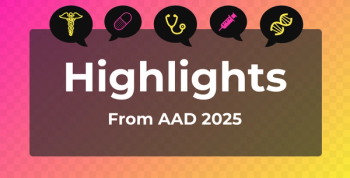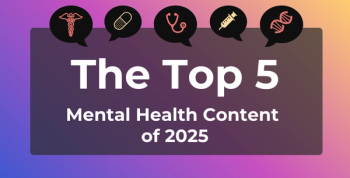
The American Journal of Managed Care
- November 2025
- Volume 31
- Issue 11
- Pages: e313-e314
Clinical Setting of Initial Psychotic Spectrum Disorder Diagnoses in an Integrated Health System
This study examines the clinical settings of first-time psychotic spectrum disorder diagnoses in an integrated health system.
Am J Manag Care. 2025;31(11):e313-e314.
Takeaway Points
- In this diverse cohort of patients with first-time psychotic spectrum disorders (PSDs), 45.7% were diagnosed in outpatient psychiatry clinics, and 42.0% were diagnosed in the emergency department (ED).
- Specific PSDs, such as schizophrenia or schizoaffective disorder, were more often diagnosed in outpatient psychiatry clinics compared with EDs.
- The ED plays a critical role in early identification of PSDs, often serving as the first point of contact for individuals in crisis.
- There is a need to improve diagnostic accuracy and referral pathways to ensure timely and effective treatment for patients diagnosed with PSD.
Psychotic spectrum disorders (PSDs) typically emerge during late adolescence and early adulthood,1 a critical period marked by high rates of health care engagement across various settings, including emergency departments (EDs),2 primary care clinics, and psychiatric services.3,4 Understanding where and how these diagnoses first occur is essential for refining outreach and enhancing mental health care delivery. The transfer of care to a specialty service is often missed or delayed, resulting in lost opportunities for early intervention.5 We examined the clinical settings of first-time PSD diagnoses, shedding light on how an integrated health care system can support earlier and more effective intervention.
This retrospective cohort study used electronic health records of individuals aged 15 to 29 years who received a first-time diagnosis of a PSD between January 1, 2017, and December 31, 2019. PSD diagnoses included schizoaffective disorder (International Classification of Diseases, Tenth Revision, Clinical Modification code F25.X), schizophrenia (F20.X), delusional disorders (F22), schizotypal and brief psychotic disorder (F21, F23), and unspecified or other psychotic disorders (F24, F28, F29) documented from encounters in primary care, inpatient services, EDs, addiction medicine, and psychiatry departments. Analysis of variance and χ2 tests were used to compare patient characteristics across clinical settings. Significance was defined by a P value less than .05.
Among the total cohort of 1726 adult patients with a new diagnosis of PSD, 43.2% were female and the mean (SD) age was 20.9 (4.0) years. The largest share of patients identified as White (38.2%), followed by Latino/Hispanic (25.0%) and Black (19.0%). Nearly half (45.7%) of the initial PSD diagnoses occurred in outpatient psychiatry, whereas 42.0% were made in the ED (
Our results indicate that outpatient psychiatry settings led to more precise diagnoses, likely due to the comprehensive diagnostic evaluations conducted there. More specific diagnoses, in turn, allow for more tailored and detailed treatment plans. We also found that EDs play a significant role in the initial identification of PSDs, emphasizing the need for enhanced diagnostic protocols in these settings. The high proportion of diagnoses made in the ED highlights an opportunity to improve early diagnostic accuracy and ensure that patients receive appropriate follow-up care. Strengthening pathways for patients from the ED to specialty psychiatric care could help reduce these gaps and lead to more accurate diagnoses and timely interventions.
In conclusion, our study emphasizes the importance of the ED as a critical point of contact for the early identification of PSD. The findings support the need for integrated care pathways that connect patients receiving initial diagnoses in acute settings to specialized psychiatric services.
Author Affiliations: Department of Psychiatry, Kaiser Permanente Oakland Medical Center (CH, MEH, IS-S), Oakland, CA; Division of Research, Kaiser Permanente Northern California (AHK-S), Pleasanton, CA; Department of Psychiatry and Behavioral Sciences, University of California, San Francisco (MEH, IS-S), San Francisco, CA.
Source of Funding: The Kaiser Permanente Northern California Office of Graduate Medical Education and the Kaiser Permanente Garfield Memorial Fund.
Author Disclosures: The authors report no relationship or financial interest with any entity that would pose a conflict of interest with the subject matter of this article.
Authorship Information: Concept and design (CH, MEH, IS-S); acquisition of data (AHK-S, IS-S); analysis and interpretation of data (CH, AHK-S, MEH, IS-S); drafting of the manuscript (CH, AHK-S, MEH, IS-S); critical revision of the manuscript for important intellectual content (CH, AHK-S, MEH, IS-S); statistical analysis (AHK-S); and supervision (IS-S).
Address Correspondence to: Icelini Stavers-Sosa, MD, Kaiser Permanente Oakland Medical Center, 3900 Broadway, Oakland, CA 94611. Email: Icelini.x.stavers-sosa@kp.org.
REFERENCES
1. Kessler RC, Berglund P, Demler O, Jin R, Merikangas KR, Walters EE. Lifetime prevalence and age-of-onset distributions of DSM-IV disorders in the National Comorbidity Survey Replication. Arch Gen Psychiatry. 2005;62(6):593-602. doi:10.1001/archpsyc.62.6.593
2. Tempelaar W, Kozloff N, Mallia E, Voineskos A, Kurdyak P. Mental health service use before first diagnosis of a psychotic disorder. JAMA Psychiatry. 2024;81(9):928-935. doi:10.1001/jamapsychiatry.2024.1467
3. Simon GE, Coleman KJ, Yarborough BJH, et al. First presentation with psychotic symptoms in a population-based sample. Psychiatr Serv. 2017;68(5):456-461. doi:10.1176/appi.ps.201600257
4. Myran DT, Harrison LD, Pugliese M, et al. Transition to schizophrenia spectrum disorder following emergency department visits due to substance use with and without psychosis. JAMA Psychiatry. 2023;80(11):1169-1174. doi:10.1001/jamapsychiatry.2023.3582
5. Esque J, Rasmussen A, Spada M, Gopalan P, Sarpal D. First-episode psychosis and the role of the psychiatric consultant. J Acad Consult Liaison Psychiatry. 2022;63(1):32-35. doi:10.1016/j.jaclp.2021.07.003
Articles in this issue
Newsletter
Stay ahead of policy, cost, and value—subscribe to AJMC for expert insights at the intersection of clinical care and health economics.








































